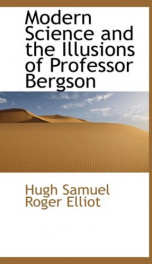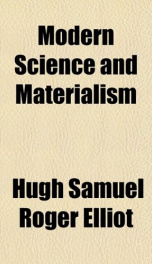modern science and the illusions of professor bergson

Purchase of this book includes free trial access to www.million-books.com where you can read more than a million books for free. This is an OCR edition with typos. Excerpt from book: and not a certain new scholasticism that has grown up during the latter half of the nineteenth century around the physics of Galileo, as the old scholasticism grew up around Aristotle.'1 After L'Evolution Crfatrtce, Bergson's most important work is Maticre et Mdmoire. Indeed, these are the only two among his philosophical works which have scientific pretensions, and are not purely metaphysics. It behoves us, therefore, to give a brief account of the doctrines of this work. Its object is to trace the relationship of mind and body; and in particular to attack the theory of psycho-physical parallelism which has been generally adopted by physiologists and psychologists, and which I shall describe in Chapter v. The theory is also attacked in the Bitlletin de la Socidtd Franfaise de Philosophic for June 1901 ; but, the objections there raised being professedly metaphysical, an examination of them does not come within our purview, but may be left for those who hold that metaphysics is capable of reaching true conclusions. Matiere et Mdmoirc opens with a novel theoryof perception, in which the Professor intends to reconcile realism with idealism. For realists and idealists alike have postulated the existence of two quite different modes of experience, which in common language are termed subjective and objective. The difference between mind and matter has appeared to be a gulf which cannot be bridged. Bergson herewith undertakes to bridge it. Physiologists have discovered that whenever we have a perception of some external object, there takes place a nervous disturbance in sense-organ and brain; and that the cerebral disturbance is a condition of the existence of the mental perception. From this it has been inferred that ' perceptions' are localised within the brain. But Bergson deni...
Info about the book
Author:
Series:
Unknown
ASIN:
123102240X
Rating:
2.5/5 (4)Your rating:
0/5
Languge:
English
Users who have this book
Users who want this book
What readers are saying
What do you think? Write your own comment on this book!
write a commentif you like modern science and the illusions of professor bergson try:
Do you want to read a book that interests you? It’s EASY!
Create an account and send a request for reading to other users on the Webpage of the book!





